Dominique Luchart's Blog, page 590
June 20, 2021
King Grimlock rules in IDW’s wild ‘Transformers’ summer comic series, ,
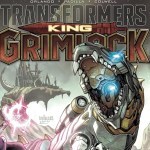
Let’s face it, the magnificent metal beast known as Grimlock is one of the coolest Autobots ever to emerge from the planet Cybertron, and the more adventurous mischief he gets into in the vast “Transformers” universe, the better.
Now IDW Publishing is crowning this gargantuan T-rex Dinobot with his own comic book series this summer titled “Transformers: King Grimlock” for a sword-and-sorcery saga sure to elicit rabid fan response.
“King Grimlock” is the first of two five-issue event series arriving in August from IDW that also includes the parallel dimension diversions of “Transformers: Shattered Glass.”
Related: Transformers: The Last Knight’ Serves Up Real Space Technology
[image error]
Transformers: King Grimlock #1 e-book | $4.99 at Amazon
Grimlock, the transforming T-rex of the Transformers universe’s Dinobots, stars in his own sci-fi/fantasy miniseries from IDW.View Deal
[image error]
Grimlock, that loveable (and terrifying) transforming space robot T-rex, will star in his own Transformers comic miniseries for summer 2021. (Image credit: IDW)Written by Steve Orlando (“Wonder Woman,” “Justice League of America”) and injected with epic artwork by Agustin Padilla (“Dungeons & Dragons,” “Suicide Squad”) and colors by Jeremy Colwell, “King Grimlock” casts one of the most iconic “Transformers” characters into a realm of fantastic monsters and mystical powers.
In a brutal world where the strongest rule with sword and iron, the ferocious Grimlock discovers a new opportunity to prove he’s the strongest that ever lived. But as Grimlock and the human barbarian Arko soon learn, sometimes pure brute strength isn’t enough.
“”King Grimlock” is a sky-high dream come to life, a story so big and wild, I wasn’t sure if the “Transformers” universe could contain it,” says Orlando. “This is a first-of-its-kind, science/fantasy epic for fans new and old, whether you follow the animation of the ’80s, the modern shows of the ’00s, the big screen blockbusters, the decades of incredible comics, or if you’ve been intrigued by Grimlock action figures on the shelf. Everyone’s welcome!”
Related: ‘Transformers: Dark of the Moon’ Has Real-Life NASA Touches
[image error]
An alternate cover for Grimlock’s big day out in a new miniseries from IDW. (Image credit: IDW)Cary Nord is the Eisner Award-winning artist of Marvel’s “Conan the Barbarian,” and here he delivers the ideal premiere issue cover art to complement “Transformers: King Grimlock’s” high fantasy theme. Additional variants will be offered for retailers and fans, including Cover B by series artist Agustin Padilla, and a Retailer Incentive Edition featuring art by Mateus Santolouco.
“By spotlighting a beloved character like Grimlock in an epic barbarian fantasy, Steve, Agustin, and Jeremy are crafting an iconic story that expands the understanding of who Grimlock is and what a Transformers story can be,” says editor David Mariotte. “Plus, a two-story tall robotic T-rex battles dragons, magicians, and monsters, which is awesome.”
IDW’s “Transformers: King Grimlock #1” stomps into stores and online retailers on August 4.
Follow us on Twitter @Spacedotcom and on Facebook.
Join our Space Forums to keep talking space on the latest missions, night sky and more! And if you have a news tip, correction or comment, let us know at: community@space.com.
The post King Grimlock rules in IDW’s wild ‘Transformers’ summer comic series, , appeared first on NEWDAWN Blog.
100,000 star nurseries mapped in first-of-its-kind survey, ,
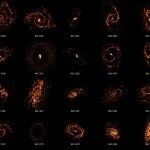
Stellar nurseries, the cauldrons of gas and dust where stars are forged, are far more diverse than astronomers first thought, according to a new, first-of-its kind survey.
Astronomers at the Physics at High Angular Resolution in Nearby Galaxies (PHANGS) project have systematically charted more than 100,000 nurseries across 90 galaxies, and found that each one is far more unique than first thought.
Stars can take tens of millions of years to form — growing from billowing clouds of turbulent dust and gas into gently glowing protostars, before finally materializing into gigantic orbs of fusion-powered plasma like our sun. But how quickly this process depletes a nursery’s store of gas and dust, and how many stars are subsequently able to form in a given place, depends on a stellar nursery’s location in a galaxy.
Related: The 12 strangest objects in the universe
“We used to think that all stellar nurseries across every galaxy must look more or less the same, but this survey has revealed that this is not the case, and stellar nurseries change from place to place,” lead author Adam Leroy, associate professor of astronomy at The Ohio State University, said in a statement. “These nurseries are responsible for building galaxies and making planets, and they’re just an essential part in the story of how we got here.”
[image error]
NGC4535, a spiral and stellar bar galaxy, was also included in the survey. (Image credit: ALMA (ESO/NAOJ/NRAO)/PHANGS, S. Dagnello (NRAO))The five-year survey, conducted across a section of the cosmos known as the nearby universe because of its proximity to our own galaxy, used the Atacama Large Millimeter/Submillimeter Array (ALMA) radio telescope located in Chile’s Atacama Desert. By conducting their survey in the radio part of the electromagnetic spectrum, rather than the optical part, the astronomers could focus on the faint glow from the dust and gas of the dark and dense molecular clouds, as opposed to the visible light from the young stars birthed by them.
This allowed the researchers to study how a star’s home cloud shapes its formation.
“To understand how stars form, we need to link the birth of a single star back to its place in the universe. It’s like linking a person to their home, neighborhood, city and region. If a galaxy represents a city, then the neighborhood is the spiral arm, the house the star-forming unit, and nearby galaxies are neighboring cities in the region,” PHANGS principal investigator Eva Schinnerer, an astronomer at the Max Planck Institute for Astronomy, said in the statement. “These observations have taught us that the ‘neighborhood’ has small but pronounced effects on where and how many stars are born.”
They found that stars are forged differently depending on whether the molecular clouds that create them are located in galactic discs, stellar bars, spiral arms or galactic centers.
[image error]
A small selection of the 90 galaxies included in ALMA’s survey. (Image credit: ALMA (ESO/NAOJ/NRAO)/PHANGS, S. Dagnello (NRAO))“Clouds in the dense central regions of galaxies tend to be more massive, denser and more turbulent than clouds that reside in the quiet outskirts of a galaxy,” said co-author Annie Hughes, an astronomer at L’Institut de Recherche en Astrophysique et Planetologie. “The life cycle of clouds also depends on their environment. How fast a cloud forms stars and the process that ultimately destroys the cloud both seem to depend on where the cloud lives.”
Next, the team will try to figure out what this variation could mean for the formation of stars and planets, as well as for our own place in the universe.
RELATED CONTENT
—The 18 biggest unsolved mysteries in physics
—From Big Bang to present: Snapshots of our universe through time
“This is the first time we have gotten a clear view of the population of stellar nurseries across the whole nearby universe. In that sense, it’s a big step towards understanding where we come from,” Leroy said in the statement. “While we now know that stellar nurseries vary from place to place, we still do not know why or how these variations affect the stars and planets formed. These are questions that we hope to answer in the near future.”
The researchers presented their findings on Tuesday (June 8) at the online summer meeting of the American Astronomical Society, and they published their findings April 15 on the preprint server arXiv, so the study has yet to be peer-reviewed.
Originally published on Live Science.
Stellar nurseries, the cauldrons of gas and dust where stars are forged, are far more diverse than astronomers first thought, according to a new, first-of-its kind survey.
Astronomers at the Physics at High Angular Resolution in Nearby Galaxies (PHANGS) project have systematically charted more than 100,000 nurseries across 90 galaxies, and found that each one is far more unique than first thought.
Stars can take tens of millions of years to form — growing from billowing clouds of turbulent dust and gas into gently glowing protostars, before finally materializing into gigantic orbs of fusion-powered plasma like our sun. But how quickly this process depletes a nursery’s store of gas and dust, and how many stars are subsequently able to form in a given place, depends on a stellar nursery’s location in a galaxy.
Related: The 12 strangest objects in the universe
“We used to think that all stellar nurseries across every galaxy must look more or less the same, but this survey has revealed that this is not the case, and stellar nurseries change from place to place,” lead author Adam Leroy, associate professor of astronomy at The Ohio State University, said in a statement. “These nurseries are responsible for building galaxies and making planets, and they’re just an essential part in the story of how we got here.”
[image error]
NGC4535, a spiral and stellar bar galaxy, was also included in the survey. (Image credit: ALMA (ESO/NAOJ/NRAO)/PHANGS, S. Dagnello (NRAO))The five-year survey, conducted across a section of the cosmos known as the nearby universe because of its proximity to our own galaxy, used the Atacama Large Millimeter/Submillimeter Array (ALMA) radio telescope located in Chile’s Atacama Desert. By conducting their survey in the radio part of the electromagnetic spectrum, rather than the optical part, the astronomers could focus on the faint glow from the dust and gas of the dark and dense molecular clouds, as opposed to the visible light from the young stars birthed by them.
This allowed the researchers to study how a star’s home cloud shapes its formation.
“To understand how stars form, we need to link the birth of a single star back to its place in the universe. It’s like linking a person to their home, neighborhood, city and region. If a galaxy represents a city, then the neighborhood is the spiral arm, the house the star-forming unit, and nearby galaxies are neighboring cities in the region,” PHANGS principal investigator Eva Schinnerer, an astronomer at the Max Planck Institute for Astronomy, said in the statement. “These observations have taught us that the ‘neighborhood’ has small but pronounced effects on where and how many stars are born.”
They found that stars are forged differently depending on whether the molecular clouds that create them are located in galactic discs, stellar bars, spiral arms or galactic centers.
[image error]
A small selection of the 90 galaxies included in ALMA’s survey. (Image credit: ALMA (ESO/NAOJ/NRAO)/PHANGS, S. Dagnello (NRAO))“Clouds in the dense central regions of galaxies tend to be more massive, denser and more turbulent than clouds that reside in the quiet outskirts of a galaxy,” said co-author Annie Hughes, an astronomer at L’Institut de Recherche en Astrophysique et Planetologie. “The life cycle of clouds also depends on their environment. How fast a cloud forms stars and the process that ultimately destroys the cloud both seem to depend on where the cloud lives.”
Next, the team will try to figure out what this variation could mean for the formation of stars and planets, as well as for our own place in the universe.
RELATED CONTENT
—The 18 biggest unsolved mysteries in physics
—From Big Bang to present: Snapshots of our universe through time
“This is the first time we have gotten a clear view of the population of stellar nurseries across the whole nearby universe. In that sense, it’s a big step towards understanding where we come from,” Leroy said in the statement. “While we now know that stellar nurseries vary from place to place, we still do not know why or how these variations affect the stars and planets formed. These are questions that we hope to answer in the near future.”
The researchers presented their findings on Tuesday (June 8) at the online summer meeting of the American Astronomical Society, and they published their findings April 15 on the preprint server arXiv, so the study has yet to be peer-reviewed.
Originally published on Live Science.
The post 100,000 star nurseries mapped in first-of-its-kind survey, , appeared first on NEWDAWN Blog.
Astronauts will install a new solar array on the International Space Station in a spacewalk today. Here’s how to watch., ,
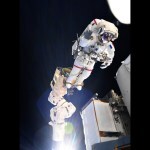
Two astronauts will attempt to complete the installation of a new solar array on the International Space Station today (June 20) after running out of time last week and you can watch it live here.
NASA astronaut Shane Kimbrough and Thomas Pesquet, from the European Space Agency, will exit the Quest airlock around 8 a.m. EDT (1200 GMT), if the extravehicular activity preps go to plan. You can watch the spacewalk live here in the window above, courtesy of NASA TV, or directly via the agency’s website.
On Wednesday (June 16), Kimbrough and Pesquet partially installed the first of six new solar arrays on the space station, but some technical issues and problems with the equipment delayed their attempts to complete the work.
Pesquet, who will be spacewalking for the fourth time, will be wearing the spacesuit with red stripes on it to designate him as lead spacewalker, known as extravehicular crewmember 1 (EV1). Kimbrough, wearing a plain white spacesuit as EV2, will be on his eighth spacewalk, according to NASA.
It will be their fourth spacewalk together; the pair took two spacewalks together during Expedition 50, in 2017. They are currently part of the station’s Expedition 65 crew.
Related: Spacewalking astronauts prepare International Space Station for new solar arrays
“Space is hard … on our spacewalk, we encountered several issues that the entire team worked through incredibly well,” Kimbrough said on Twitter on Thursday (June 17).
The spacewalk is expected to troubleshoot the installation of the first of the planned ISS Roll-Out Solar Arrays (iROSA) in front of a 20-year-old array located on the far end of the left side of the space station’s backbone truss. If there’s time, the astronauts will also deploy a second iROSA to augment the P6/4B solar array.
NASA is working on the spacewalks to boost the station’s power system, after a more than four-year effort to put in newer and more efficient batteries on the ISS. The eight solar wings had an original design life of 15 years and are showing signs of degraded production of power after exceeding their planned time in orbit.
[image error]
The new iROSA solar arrays will be installed on six of the eight power channels on the International Space Station. During the June 16 spacewalk, Pesquet and Kimbrough began installing the first two arrays, starting at the 2B power channel (shown in the upper far right). (Image credit: NASA)The newer solar arrays, made by Boeing and arriving at the ISS on a SpaceX Dragon June 5, are designed to deploy in front of the older ones. Once complete, electricity supply on the space station will be boosted by 20% to 30%.
NASA Expedition 65 astronauts Megan McArthur and Mark Vande Hei will support the spacewalkers from inside the space station, while a socially distanced team at NASA Mission Control in Houston will also assist the crew.
NASA says the spacewalk will be the 240th in support of station assembly, maintenance, and upgrades.
Follow Elizabeth Howell on Twitter @howellspace. Follow us on Twitter @Spacedotcom and on Facebook.
Join our Space Forums to keep talking space on the latest missions, night sky and more! And if you have a news tip, correction or comment, let us know at: community@space.com.
The post Astronauts will install a new solar array on the International Space Station in a spacewalk today. Here’s how to watch., , appeared first on NEWDAWN Blog.
June 19, 2021
Facial recognition software used to verify unemployment recipients reportedly doesn’t work well, Kim Lyons
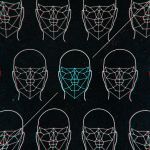
 Illustration by Alex Castro / The Verge
Illustration by Alex Castro / The VergeThe facial recognition program used by nearly two dozen US states to to verify people seeking unemployment benefits is working inconsistently, leading to many people being denied benefits or having their applications put on hold, Motherboard reported.
The identity verification service ID.me is intended to help reduce unemployment fraud, and uses biometric data and official documents to verify people. But according to Motherboard, some who have applied for unemployment have reported that ID.me has failed to identify them correctly, and that they have had difficulty reaching someone at ID.me to remedy the problem.
ID.me didn’t immediately reply to a request for comment Saturday, but the company’s CEO Blake Hall told Motherboard in an…
The post Facial recognition software used to verify unemployment recipients reportedly doesn’t work well, Kim Lyons appeared first on NEWDAWN Blog.
Facial recognition software used to verify unemployment recipients reportedly doesn’t work well,
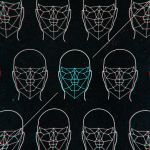
The facial recognition program used by nearly two dozen US states to to verify people seeking unemployment benefits is working inconsistently, leading to many people being denied benefits or having their applications put on hold, Motherboard reported.
The identity verification service ID.me is intended to help reduce unemployment fraud, and uses biometric data and official documents to verify people. But according to Motherboard, some who have applied for unemployment have reported that ID.me has failed to identify them correctly, and that they have had difficulty reaching someone at ID.me to remedy the problem.
ID.me didn’t immediately reply to a request for comment Saturday, but the company’s CEO Blake Hall told Motherboard in an email that the algorithms the company uses in its Face Match technology have “99.9% efficacy.” He added that user error may be to blame, and said the company was not aware of “eligible individuals” who couldn’t verity their identity with its software.
With millions of people unemployed due to the coronavirus pandemic, state offices have dealt with a surge of claims over the past year. Some states reported a sharp rise in fraudulent claims last spring, and the Department of Labor reported (.pdf) in February that between March and October of last year it had identified more than $5 billion of potentially fraudulent unemployment payments. That’s far less than the $400 billion estimate Hall suggested to Motherboard and other media outlets.
The post Facial recognition software used to verify unemployment recipients reportedly doesn’t work well, appeared first on NEWDAWN Blog.
Facebook to update its community standards to clarify what it considers satire,

Following a recommendation from its Oversight Board, Facebook says it will update its community standards to be clearer about how it handles satirical content, the company said in a blog post.
“We’ll add information to the Community Standards that makes it clear where we consider satire as part of our assessment of context-specific decisions,” according to the post. “This change will allow teams to consider satire when assessing potential Hate Speech violations.”
The update comes after the Oversight Board determined that Facebook was wrong to remove a user’s comment with a reference to the Turkish government, based on the two buttons meme. The Oversight Board described it:
This meme featured the same split-screen cartoon from the original meme, but with the cartoon character’s face substituted for a Turkish flag. The cartoon character has their right hand on their head and appears to be sweating. Above the cartoon character, in the other half of the split-screen, there are two red buttons with corresponding labels, in English: “The Armenian Genocide is a lie” and “The Armenians were terrorists who deserved it.” The meme was preceded and followed by “thinking face” emoji.
Facebook removed the post, citing its Cruel and Insensitive Community Standard, which says it will remove posts that target “victims of serious physical or emotional harm,” which includes the use of memes and gifs. Facebook later reclassified the removal so it fell under its Hate Speech Community Standard.
The Oversight Board pointed out in its recommendation that while Facebook has said it will make exceptions for satire, it doesn’t specify how or what qualifies as satire in its guidelines. Facebook said in its post that in addition to making its guidelines around satire clearer, it would “initiate a review of identical content with parallel context,” and may take further action.
This marks the latest instance of Facebook following the guidance of its fledgling Oversight Board. Earlier this month, Facebook said would end its so-called “newsworthiness” policy, which allowed politicians to skirt many of its content rules. Going forward the company “will not treat content posted by politicians any differently from content posted by anyone else,” Facebook’s Nick Clegg said in a blog post.
The post Facebook to update its community standards to clarify what it considers satire, appeared first on NEWDAWN Blog.
Facebook to update its community standards to clarify what it considers satire, Kim Lyons

 illustration by Alex Castro / The Verge
illustration by Alex Castro / The VergeFollowing a recommendation from its Oversight Board, Facebook says it will update its community standards to be clearer about how it handles satirical content, the company said in a blog post.
“We’ll add information to the Community Standards that makes it clear where we consider satire as part of our assessment of context-specific decisions,” according to the post. “This change will allow teams to consider satire when assessing potential Hate Speech violations.”
The update comes after the Oversight Board determined that Facebook was wrong to remove a user’s comment with a reference to the Turkish government, based on the two buttons meme. The Oversight Board described it:
This meme featured the same split-screen cartoon from the…
The post Facebook to update its community standards to clarify what it considers satire, Kim Lyons appeared first on NEWDAWN Blog.
The best pre-Prime Day deals for Father’s Day weekend,

Next week is when Prime Day 2021 begins. We’ll be here early on Monday and continue scouring deals through Tuesday night, bringing you the best deals on the tech we know you’ll like. However, before that, on Sunday, is Father’s Day. If you’ve already gotten a gift for the dad in your life, hopefully you’ll be able to celebrate together in some manner. But, if you haven’t yet, it’s never too late to get one through our thoughtfully-curated gift guide.
Best Buy is offering a rare discount on the Magic Keyboard for the 12.9-inch iPad Pro (that fits even the latest M1-equipped version). Normally $349, it’s $199 for all of Saturday. Usually, it’s just the 11-inch model that sees a big discount. This keyboard has USB-C passthrough charging, it’s sturdy, and it has an excellent trackpad and keyboard. Keep in mind, though, that it’s going to add a good amount of weight and thickness while attached to your iPad Pro.

This version of Apple’s Magic Keyboard can fit the iPad Pro (12.9-inch) that charges via USB-C. It provides a set of backlit keys and a trackpad so you can be more productive or perhaps horse around with more efficiency.
$199
at Best Buy (12.9-inch)
 Image: Philips
Image: PhilipsWhether for Father’s Day or for yourself, Philips Hue is offering solid deals on two smart light bundles. The first is a three-pack of standard E26 white and color ambiance bulbs for $100 (usually $135). If you want to turn the color in your bathroom to blue and your living room to green, these are the bulbs for you. They’re Bluetooth-enabled, too, so you don’t need a Hue bridge accessory to use them, which is appealing. Though, if you want more instantaneous and seamless functionality, you may want to eventually get that Hue Bridge at some point — and these bulbs will work just fine with it once you do.

| Image: Philips
Philips Hue three-pack white and color ambiance bulbs
$100 $135 26% offFor Father’s Day (and Prime Day 2021) and through June 22nd, Philips Hue is offering a deal on a three-pack of E26-sized white and color ambiance LED lights that are Bluetooth-ready.
$100
at Philips Hue
The other Philips Hue deal is slightly more niche, but still good. If you buy Philips Hue’s Ligthstrip Plus V4 80-inch model for $80 (located at the bottom of this page), the company will toss in a 40-inch extension at no extra cost. These two items would normally cost $105.
In case you haven’t already seen it in our deals coverage, Best Buy is offering the best prices on the previous-gen iPad Pro through Sunday, June 20th. If you have a free My Best Buy account, you can get $150 off most 11-inch and 12.9-inch configurations, whether you want a Wi-Fi or LTE-connected iPad. The base 11-inch model with 128GB of storage costs $600 — the same price as the iPad Air with half that amount of storage. The 256GB 11-inch model is just $100 more at $700. If you want a 12.9-inch iPad Pro, the 128GB base model costs $850.

iPad Pro (2020, 11-inch, Wi-Fi only)
$600 $799 25% offThe latest iPad Pro uses a USB-C port instead of Lightning and features a dual-lens rear camera array and Face ID.
$600
at Best Buy (128GB)
$700
at Best Buy (256GB)
$900
at Best Buy (512GB)

iPad Pro (2020, 12.9-inch, Wi-Fi only)
$850 $1,000 15% offThis 12.9-inch Apple tablet from 2020 includes a 120Hz refresh rate display, 4K rendering for video editing apps, and enhanced AR performance. It doesn’t have the M1 processor.
$850
at Best Buy (128GB)
$950
at Best Buy (256GB)
$1,150
at Best Buy (512GB)
The post The best pre-Prime Day deals for Father’s Day weekend, appeared first on NEWDAWN Blog.
The best pre-Prime Day deals for Father’s Day weekend, Cameron Faulkner

 Photo by Vjeran Pavic / The Verge
Photo by Vjeran Pavic / The VergeNext week is when Prime Day 2021 begins. We’ll be here early on Monday and continue scouring deals through Tuesday night, bringing you the best deals on the tech we know you’ll like. However, before that, on Sunday, is Father’s Day. If you’ve already gotten a gift for the dad in your life, hopefully you‘ll be able to celebrate together in some manner. But, if you haven’t yet, it’s never too late to get one through our thoughtfully-curated gift guide.
Get $150 off Apple’s Magic Keyboard for the 12.9-inch iPad ProBest Buy is offering a rare discount on the Magic Keyboard for the 12.9-inch iPad Pro (that fits even the latest M1-equipped version). Normally $349, it’s $199 for all of Saturday. Usually, it’s just the 11-inch model that sees…
The post The best pre-Prime Day deals for Father’s Day weekend, Cameron Faulkner appeared first on NEWDAWN Blog.
The slow transitions of a lingering pandemic, Mary Beth Griggs

 Pedestrians walk through NYC on June 16, the day before COVID-19 restrictions lifted in the state. | Photo by Kena Betancur/VIEWpress
Pedestrians walk through NYC on June 16, the day before COVID-19 restrictions lifted in the state. | Photo by Kena Betancur/VIEWpressWith COVID-19 restrictions lifting in some places and outbreaks popping up in others, the pandemic has officially entered the weird zone.
Okay, there’s nothing official about it, but the entire world is in a strange transition time right now — and likely will be for a while. Unlike the jump-cut into the pandemic, or even the suspenseful vaccine ramp-up, this time is more hopeful, less frantic, but also stretched out in an uneven mess. Places, populations, and even industries are moving at different paces as they move back to some semblance of normality.
It’s like the entire globe is playing by a perverse version of “yes, and.” Yes, more people are vaccinated in the US than before, and immunocompromised people are still at risk. Yes,…
The post The slow transitions of a lingering pandemic, Mary Beth Griggs appeared first on NEWDAWN Blog.



